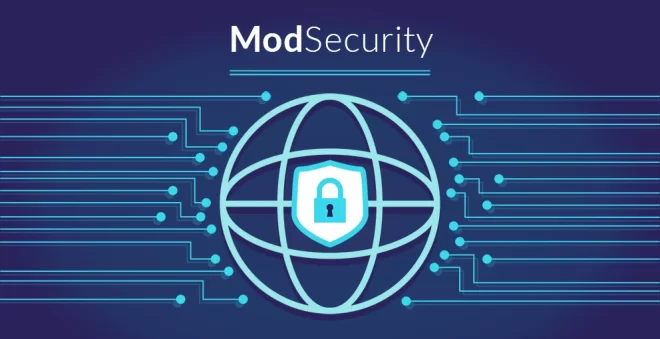
Table of Contents
What is ModSecurity…?
ModSecurity, often referred to as ModSecurity or ModSec, is an open-source web application firewall (WAF) module that can be deployed within the Apache, Nginx, or IIS web server. It provides protection against various web-based attacks by monitoring and filtering HTTP/HTTPS traffic between a web application and the internet.
Its primary function is to act as a shield between a web server and potential attackers, preventing common attacks like SQL injection, cross-site scripting (XSS), and other application-layer attacks. ModSecurity uses a set of predefined rules to inspect incoming web traffic and can be customized with additional rules to suit specific security requirements.

The system operates by analyzing HTTP requests and responses, allowing it to detect and block suspicious or malicious activities based on rule sets, which can be customized by administrators according to their security needs. It logs information about these events, enabling administrators to investigate and respond to potential security threats effectively.
Overall, ModSec plays a crucial role in enhancing the security posture of web applications and servers by adding an additional layer of protection against various cyber threats.
Uses of ModSecurity

Web Application Protection
It safeguards web applications by identifying and blocking common attacks like SQL injection, cross-site scripting (XSS), and other malicious activities targeting the application layer.
Threat Detection using ModSecurity
ModSecurity monitors incoming traffic, analyzing HTTP requests and responses in real time. It identifies suspicious patterns or behavior that might indicate an attack or security threat.
Customizable Rule Sets
Administrators can create custom rule sets or utilize pre-defined rule sets to tailor the protection to their specific security requirements. This flexibility allows for a more precise defense against known and emerging threats.
Logging and Monitoring
The system logs information about detected threats or blocked activities, providing a detailed record for analysis. This helps in understanding the nature of attacks and assists in fine-tuning security measures.
Attack Mitigation
When a threat is identified, ModSecurity can take various actions, including blocking the suspicious request, redirecting traffic, or triggering alerts to administrators for further investigation and action.
Enhanced Security Posture
By adding an extra layer of security, ModSec strengthens the overall security posture of web servers and applications, reducing the risk of successful cyber-attacks.
The purpose of ModSecurity in Web Hosting.

Enhanced Security
- Protecting Web Applications: It acts as a firewall, safeguarding web applications from various attacks like SQL injection, cross-site scripting (XSS), and other web-based threats.
- Server Protection: By filtering incoming traffic, it shields the server from potential vulnerabilities present in web applications.
Client Data Protection
Safeguarding Sensitive Information: Helps in securing sensitive data (such as customer information, payment details) hosted on web servers from unauthorized access or exploitation.
Customizable Security Measures
Rule Customization: Allows hosting providers to create custom rules or use predefined rule sets to tailor security measures based on the specific needs of hosted applications and clients.
Detection and Response
- Real-time Monitoring: Constantly monitors web traffic, promptly identifying and responding to potential threats in real time, preventing attacks before they can cause harm.
- Logging and Reporting: Generates logs detailing detected threats, providing valuable data for analysis, incident response, and compliance purposes.
Continuous Improvement and Support
Community and Development: Being open-source, ModSecurity benefits from ongoing community contributions and updates, ensuring continuous improvement and adaptability to emerging threats.
Value Addition for Clients
Added Security Layer: Hosting providers offering ModSecurity as part of their service can attract clients by emphasizing the added security layer, assuring better protection for hosted websites and applications.
Pros of ModSecurity in Web Hosting
- Enhanced Security: Provides an additional layer of security for hosted websites and applications, protecting against various web-based attacks like SQL injection, XSS, etc.
- Customizable Rules: Administrators can create or modify rules to match the specific security needs of hosted clients or applications, allowing tailored protection.
- Real-time Monitoring: Constantly monitors web traffic, enabling quick detection and response to potential threats in real time.
- Logging and Reporting: Generates logs detailing detected threats, aiding in forensic analysis, incident response, and compliance auditing.
Cons of ModSecurity in Web Hosting
- False Positives: May occasionally flag legitimate traffic as malicious, leading to false positives. Improperly configured rules may disrupt normal website operations.
- Complex Configuration: Configuring and managing ModSecurity can be complex, especially when creating custom rules or fine-tuning settings. It requires expertise for effective implementation.
- Resource Consumption: Depending on rule sets and configurations, ModSecurity can consume server resources, potentially impacting performance.

